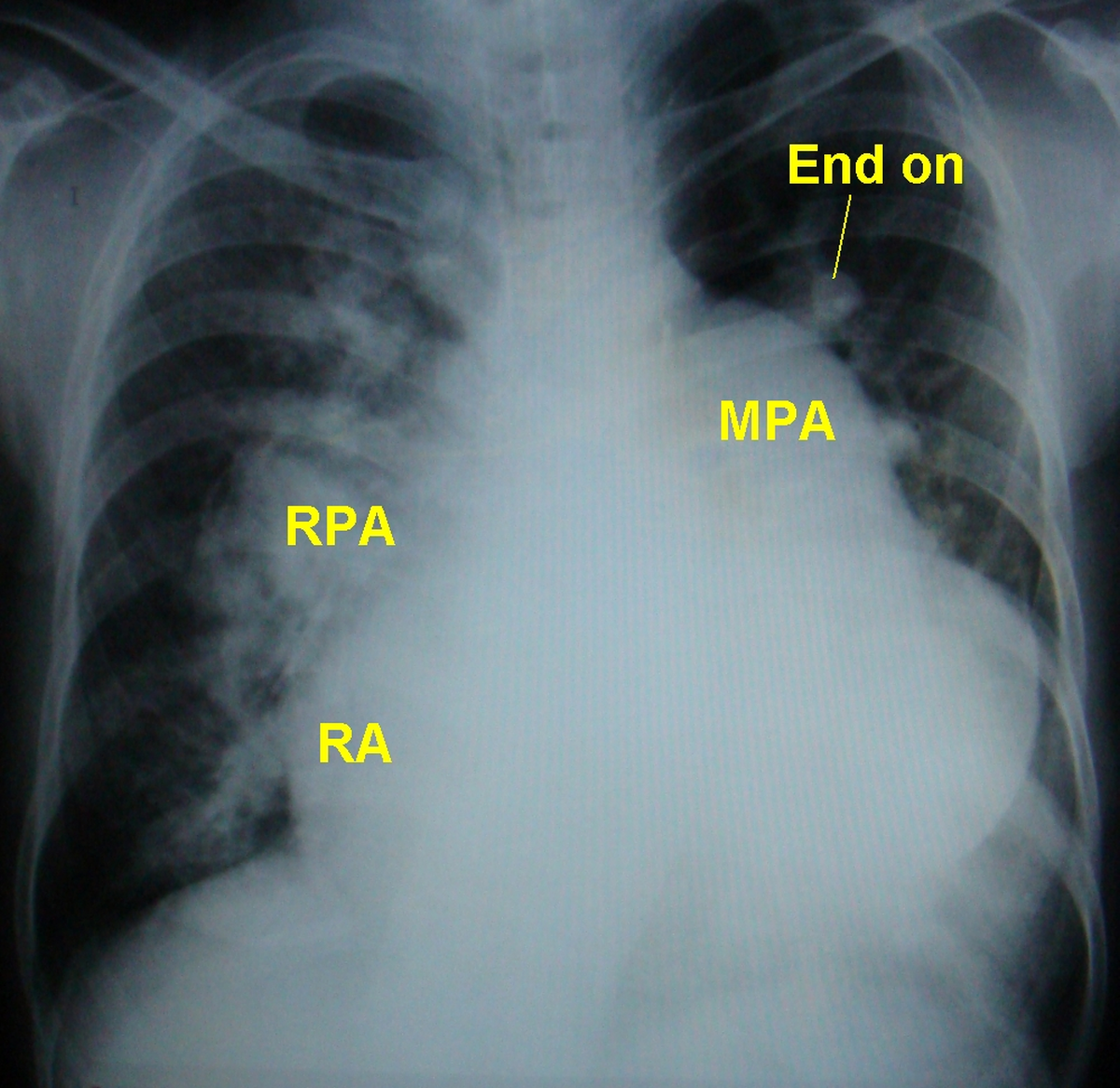X-ray chest in atrial septal defect with pulmonary hypertension
X-ray chest in atrial septal defect with pulmonary hypertension

The main pulmonary artery (MPA) is grossly dilated. The right pulmonary artery (RPA) is also quite enlarged. Right atrial enlargement is seen as a shift of the cardiac contour to the right of the spine. Pulmonary vascularity is increased and prominent end on vessels (End on) are also seen. Apex is upwards, suggesting a right ventricular configuration. All features suggest a large secundum atrial septal defect with a large left to right shunt producing severe pulmonary hypertension. Cardiomegaly on chest x-ray is suggestive of atrial septal defect in Eisenmenger syndrome, while it is unlikely in ventricular septal defect and patent ductus arteriosus. Cardiomegaly is mainly due to the grossly dilated right atrium in atrial septal defect. The right atrium is not enlarged in the other two varieties of Eisenmenger syndrome. In ventricular septal defect with large left to right shunt, the cardiac size comes down as pulmonary hypertension develops and the shunt decreases. Cardiomegaly in ventricular septal defect and patent ductus arteriosus with large left to right shunt are due to left ventricular enlargement. But this comes down with the development of pulmonary hypertension. That is why cardiomegaly is not a feature of Eisenmenger syndrome due to ventricular septal defect and patent ductus arteriosus. In patent ductus arteriosus, an additional feature on x-ray chest is the dilated aortic shadow. Inverted Y shaped ductal calcification may also be seen with patent ductus arteriosus and Eisenmenger syndrome.
Fleischner’s sign
Prominent central pulmonary artery in acute massive pulmonary embolism is called Fleischner’s sign [1]. Some authors extend the term to prominent central pulmonary artery due to other causes of pulmonary hypertension as in atrial septal defect [2].
References
- Cooksley T, Husein B, Iqbal J, Bright J. Fleischner’s sign in a massive pulmonary embolism. J Emerg Med. 2012 Jun;42(6):698-9.
- Rigatelli G, Zuin M. Diagnostic chest X-ray in atrial septal defects. J Geriatr Cardiol. 2020 Feb;17(2):125.


